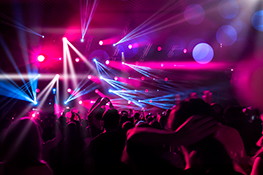The Art of Lighting Design: Creating Emotion and Atmosphere
Introduction: Beyond Illumination
Lighting design is far more than simply illuminating a stage; it’s a powerful storytelling tool capable of evoking a wide spectrum of emotions and shaping the very atmosphere of a performance. A skilled lighting designer understands the nuances of light and shadow, color temperature, and intensity, utilizing these elements to enhance the narrative, guide the audience’s eye, and create a truly immersive experience. This article explores the intricate art of lighting design, delving into the techniques and considerations that transform a stage from a mere setting into a dynamic, emotional landscape.
The Language of Light: Color, Intensity, and Texture
Color Psychology in Lighting Design
Color plays a crucial role in setting the mood. Warm colors like oranges and reds evoke feelings of warmth, excitement, or even danger, while cool colors such as blues and greens can create a sense of calm, serenity, or even coldness. Understanding color psychology is vital for a lighting designer to effectively communicate the intended emotional landscape of a scene. For instance, a deep crimson might signify passion and intensity, while a pale blue could suggest tranquility or mystery.
Intensity and its Dramatic Impact
The intensity of light, from subtle washes to dramatic spotlights, dramatically impacts the atmosphere. A dimly lit scene can create suspense and intimacy, while brightly lit areas draw attention and emphasize specific elements. The careful manipulation of intensity allows the lighting designer to highlight crucial moments, guide the audience’s focus, and control the overall pace of the production.
Texture and Depth through Lighting
Light isn’t simply about illumination; it’s about texture. By using gobos, gels, and other lighting effects, designers can project textures and patterns onto the set, adding depth and visual interest. This layering of light creates a more complex and visually rich environment, adding another layer to the storytelling. For example, a textured light might transform a simple backdrop into a mysterious forest or a stormy sea.
Shaping the Narrative: Techniques and Strategies
Motivated vs. Unmotivated Lighting
Lighting designers often work with two primary approaches: motivated and unmotivated lighting. Motivated lighting refers to light sources that are justified within the context of the scene (e.g., a lamp on a table). Unmotivated lighting, on the other hand, serves purely aesthetic purposes, enhancing the atmosphere without a direct source within the scene. A skillful blend of both is key to creating a believable and visually stunning environment.
Highlighting and Shadowing: Directing the Audience’s Gaze
The strategic use of light and shadow is essential for guiding the audience’s attention. Highlighting key actors or objects draws focus, while strategically placed shadows can create suspense, mystery, or even emphasize the character’s emotional state. Mastering this balance is fundamental to creating a coherent and engaging theatrical experience.
The Use of Special Effects: Enhancing the Spectacle
Special effects, such as strobes, moving lights, and projection mapping, can add a powerful layer of dynamism and excitement to a production. Used judiciously, these effects can amplify emotional moments, create dramatic transitions, or enhance the overall visual spectacle, leaving a lasting impression on the audience.
Collaboration and Technical Proficiency: The Designer’s Role
Collaboration with Other Creative Teams
Lighting design is inherently a collaborative process. Effective communication and close collaboration with set designers, costume designers, and directors are essential to ensure that the lighting complements and enhances the overall artistic vision. A unified approach ensures a cohesive and impactful production.
Mastering the Technical Aspects: Equipment and Software
A proficient lighting designer needs a strong understanding of lighting equipment, including consoles, fixtures, and control systems. Proficiency with lighting design software is also crucial for planning and executing complex lighting schemes. The ability to translate artistic vision into technical specifications is a vital skill for success in this field.
Conclusion: The Enduring Power of Light
Lighting design is an art form that transcends mere illumination. It’s a powerful tool for storytelling, capable of creating immersive environments, evoking strong emotions, and leaving a lasting impression on the audience. By mastering the techniques, understanding the nuances of light, and collaborating effectively with other creative professionals, lighting designers play a crucial role in shaping the success and impact of any theatrical or performance art production. The ability to manipulate light to evoke emotion and create atmosphere is a testament to the artistry and skill involved in this essential theatrical discipline.


 Auditorium Construction Services
Auditorium Construction Services 